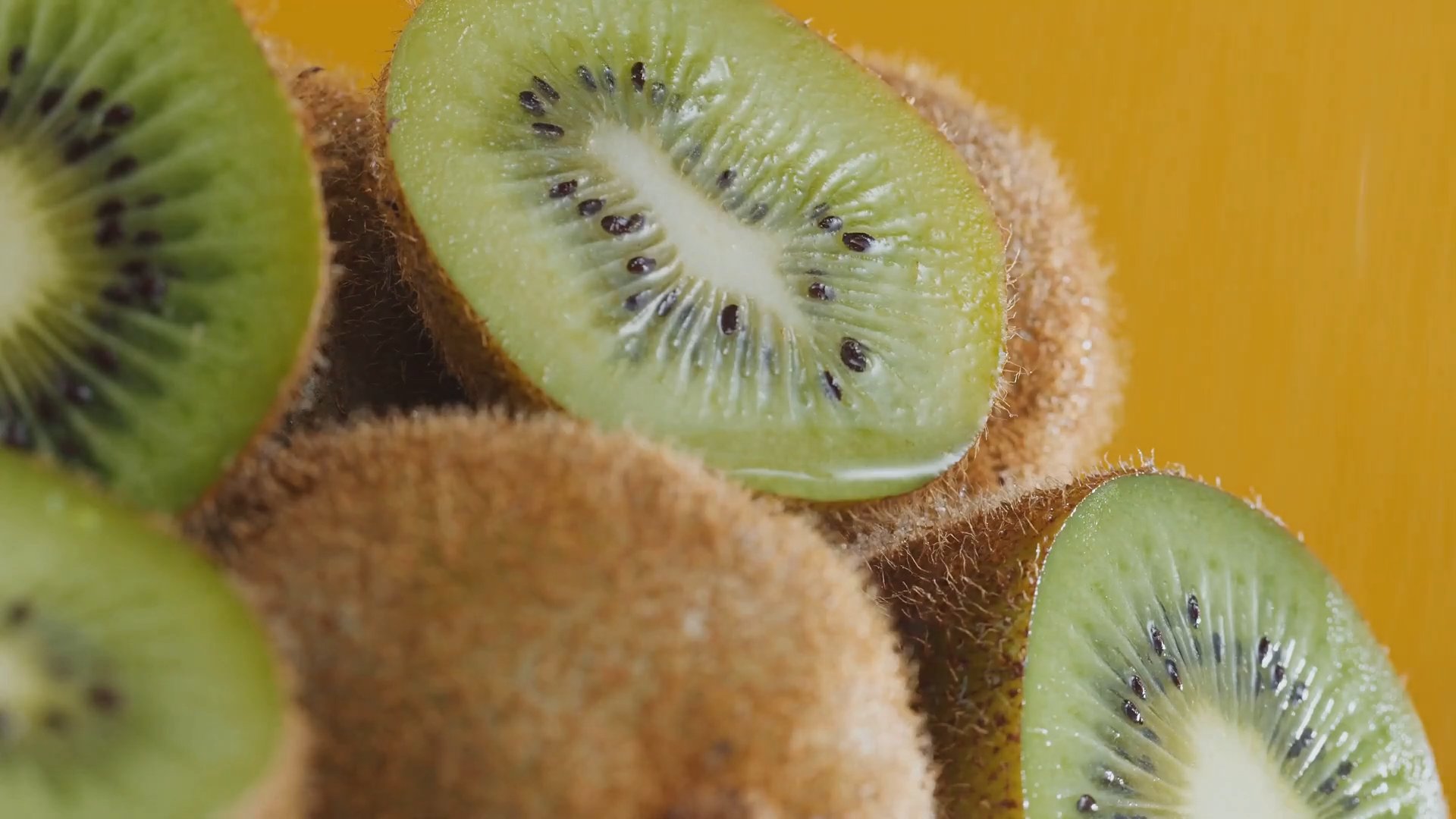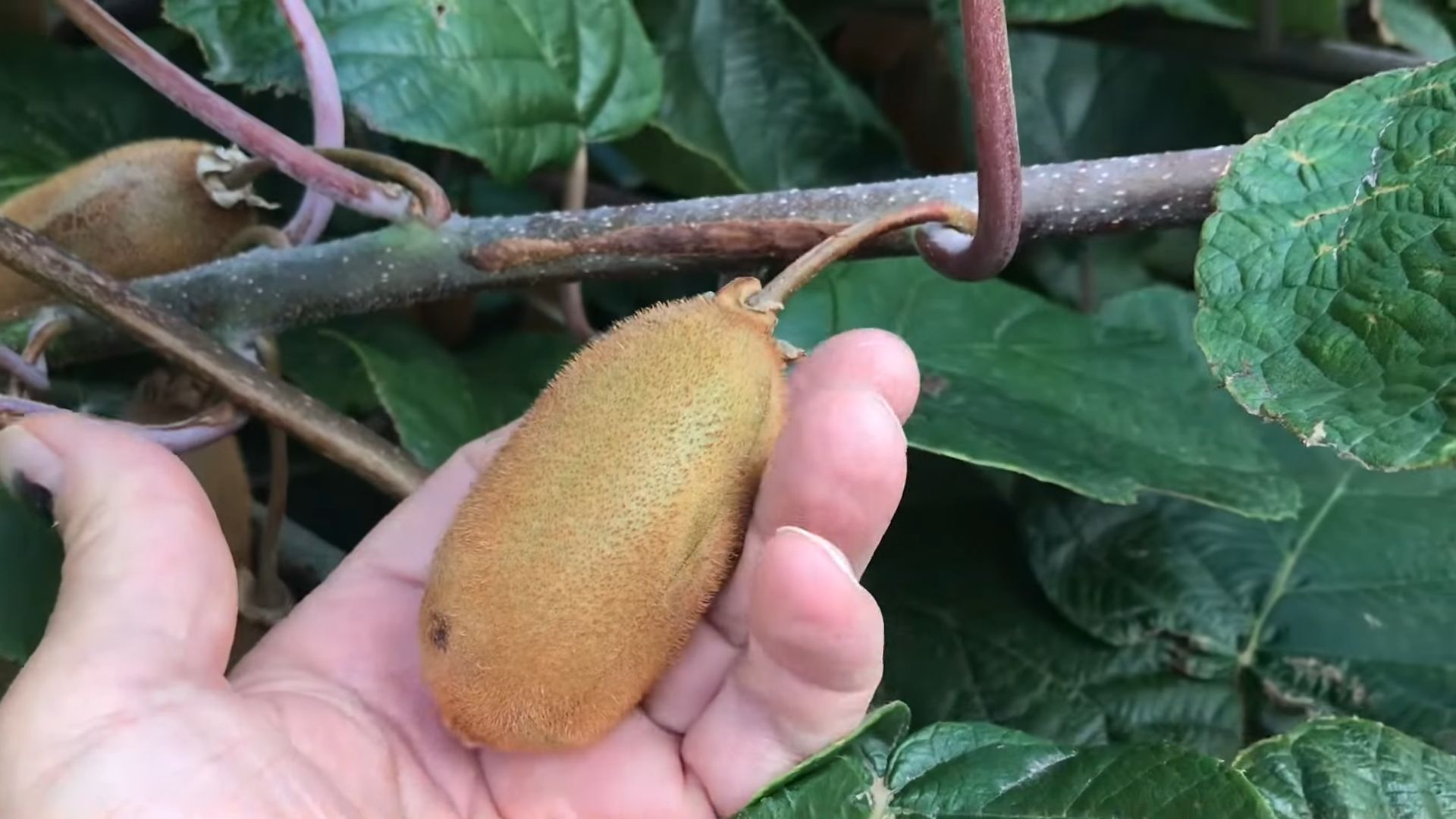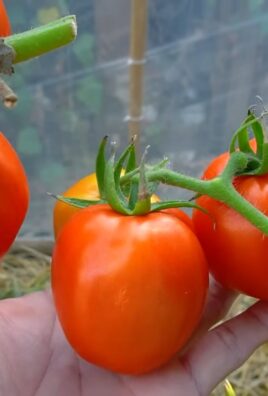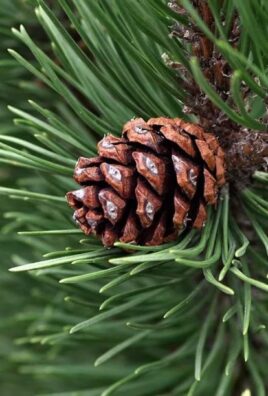Grow Kiwi Vines at Home – sounds like a dream, right? Imagine stepping into your backyard and plucking a juicy, tangy kiwi straight from the vine. It’s more achievable than you think, and this DIY guide is your passport to making that dream a reality! For centuries, kiwis, originally known as Chinese gooseberries, were cultivated in China before making their way to New Zealand, where they were rebranded and popularized. Now, you can bring a touch of that exotic history to your own garden.
But why bother with the effort? Well, store-bought kiwis can be expensive and sometimes lack that fresh, vibrant flavor. Plus, growing your own is incredibly rewarding! You’ll not only enjoy delicious fruit, but also the satisfaction of nurturing a plant from start to finish. This DIY trick will help you grow kiwi vines at home, even if you have limited space. We’ll cover everything from choosing the right variety to providing the perfect support system, ensuring you have a thriving kiwi vine that produces an abundance of fruit for years to come. Let’s get started and transform your backyard into a kiwi paradise!

Growing Kiwi Vines at Home: A DIY Guide
Okay, so you want to grow your own kiwis? Awesome! It’s totally doable, even if you don’t have a sprawling orchard. It takes a little patience and planning, but the reward of fresh, homegrown kiwis is so worth it. I’m going to walk you through everything you need to know to get started.
Choosing Your Kiwi Variety
First things first, you can’t just grab any kiwi seed and expect it to thrive. You need to consider your climate and choose a variety that’s well-suited to your area. Most kiwis need a certain amount of “chill hours” (hours below 45°F) to properly set fruit.
* Hardy Kiwi (Actinidia arguta): These are the rockstars of cold climates! They can handle temperatures down to -25°F. The fruits are smaller than the fuzzy kiwis you find in the store, but they have smooth skin and are super sweet. Popular varieties include ‘Issai’ (self-fertile, but produces more with a male pollinator), ‘Anna’, and ‘Ken’s Red’.
* Fuzzy Kiwi (Actinidia deliciosa): This is the classic kiwi you’re used to seeing. They need a longer growing season and are best suited for warmer climates (USDA zones 7-9). ‘Hayward’ is a common female variety, and you’ll need a male pollinator like ‘Matua’ to get fruit.
* Golden Kiwi (Actinidia chinensis): These have yellow flesh and a sweeter, less acidic flavor. They’re also more sensitive to cold than fuzzy kiwis.
Important Note: Most kiwi varieties are dioecious, meaning they have separate male and female plants. You’ll need at least one male plant for every 6-8 female plants to ensure proper pollination and fruit production. Some varieties, like ‘Issai’ hardy kiwi, are self-fertile, but even they benefit from having a male pollinator nearby.
Preparing the Planting Site
Kiwis are vigorous growers and need plenty of space. They also need well-drained soil and a strong support structure.
* Sunlight: Kiwis need at least 6-8 hours of sunlight per day.
* Soil: They prefer slightly acidic soil (pH 6.0-6.5) that’s rich in organic matter. Amend your soil with compost or well-rotted manure before planting. Good drainage is crucial, as kiwis don’t like soggy roots.
* Space: Give your kiwi vines plenty of room to grow. Hardy kiwis need about 10-15 feet between plants, while fuzzy kiwis need 15-20 feet.
* Support Structure: Kiwis are climbing vines and need a strong trellis or arbor to support their weight. A T-bar trellis is a popular option, but you can also use a pergola or even a sturdy fence. Make sure your support structure is built to last, as kiwi vines can live for 50 years or more!
Planting Your Kiwi Vines
Okay, you’ve chosen your variety and prepped your planting site. Now it’s time to get those vines in the ground!
1. Timing: The best time to plant kiwi vines is in the spring after the last frost or in the fall before the ground freezes.
2. Dig the Hole: Dig a hole that’s twice as wide as the root ball and just as deep.
3. Amend the Soil: Mix some compost or well-rotted manure into the soil you removed from the hole.
4. Plant the Vine: Gently remove the kiwi vine from its container and loosen any circling roots. Place the vine in the hole, making sure the top of the root ball is level with the ground.
5. Backfill: Backfill the hole with the amended soil, gently tamping it down as you go.
6. Water Thoroughly: Water the newly planted vine deeply to help settle the soil.
7. Mulch: Apply a layer of mulch around the base of the vine to help retain moisture and suppress weeds. Keep the mulch a few inches away from the trunk to prevent rot.
8. Train the Vine: As the vine grows, start training it to your support structure. Gently tie the main stem to the trellis or arbor using soft twine or plant ties.
Caring for Your Kiwi Vines
Once your kiwi vines are planted, they’ll need regular care to thrive.
* Watering: Water your kiwi vines regularly, especially during dry periods. They need consistent moisture, but avoid overwatering, which can lead to root rot.
* Fertilizing: Fertilize your kiwi vines in the spring with a balanced fertilizer. Follow the instructions on the fertilizer package. You can also amend the soil with compost or well-rotted manure each year.
* Pruning: Pruning is essential for kiwi vine health and fruit production.
* Winter Pruning: This is the most important pruning. In late winter or early spring, before the buds break, prune away any dead, damaged, or crossing branches. Also, shorten the fruiting laterals (the branches that will produce fruit) to 6-8 buds.
* Summer Pruning: In the summer, you can prune away any excessive growth to improve air circulation and sunlight penetration. Pinch back the tips of the new shoots to encourage branching.
* Pest and Disease Control: Kiwis are generally pest and disease resistant, but they can be susceptible to certain problems. Keep an eye out for pests like spider mites and aphids, and diseases like root rot and botrytis. Treat any problems promptly with appropriate organic or chemical controls.
* Pollination: If you’re growing dioecious kiwi varieties, you’ll need to ensure proper pollination. Bees are the primary pollinators of kiwis, so encourage them to visit your garden by planting bee-friendly flowers. You can also hand-pollinate the female flowers using a small paintbrush to transfer pollen from the male flowers.
Harvesting Your Kiwis
Harvesting is the most exciting part! The timing of the harvest depends on the kiwi variety and your climate.
* Hardy Kiwis: These typically ripen in late summer or early fall. The fruits will turn a darker color and become slightly soft to the touch. They’re also more fragrant when ripe. You can harvest them all at once and store them in the refrigerator for several weeks.
* Fuzzy Kiwis: These ripen later in the fall. The fruits will still be firm when harvested, but they’ll soften after a few weeks of storage. To determine if they’re ready to harvest, cut open a few fruits and check the seeds. If the seeds are black, the kiwis are ready to pick.
* Storage: Store your harvested kiwis in the refrigerator. They’ll continue to ripen slowly over time. You can also speed up the ripening process by placing them in a paper bag with an apple or banana.
Troubleshooting
Even with the best care, you might encounter some challenges when growing kiwi vines. Here are a few common problems and how to address them:
* No Fruit: This is often due to a lack of pollination. Make sure you have a male pollinator plant nearby, and encourage bees to visit your garden. You can also try hand-pollinating the flowers. Another reason could be improper pruning. Remember to prune in the winter to encourage fruiting.
* Yellowing Leaves: This could be a sign of nutrient deficiency. Fertilize your kiwi vines with a balanced fertilizer or amend the soil with compost. It could also be a sign of overwatering or poor drainage.
* Pest Infestation: Inspect your kiwi vines regularly for pests like spider mites and aphids. Treat any infestations promptly with appropriate controls.
* Disease: Kiwis can be susceptible to diseases like root rot and botrytis. Prevent these diseases by providing good drainage and air circulation. Treat any infections with appropriate fungicides.
Building a Simple Kiwi Trellis
Since I mentioned it earlier, let’s dive a bit deeper into building a simple T-bar trellis, which is a great option for supporting your kiwi vines.
Materials You’ll Need:
* Treated Lumber: You’ll need treated lumber for the posts and crossbars to prevent rotting. 4×4 posts are a good choice for the uprights, and 2x4s or 2x6s can be used for the crossbars. The length of the posts will depend on how high you want your trellis to be, but 8-10 feet is a good starting point.
* Wire: Use heavy-gauge galvanized wire to run between the crossbars. This will provide the support for the kiwi vines to climb.
* Concrete: You’ll need concrete to set the posts in the ground.
* Hardware: You’ll need screws, nails, or bolts to attach the crossbars to the posts.
*

Conclusion
So, there you have it! Growing kiwi vines at home might seem like a daunting task initially, but with a little patience, the right knowledge, and a touch of dedication, you can transform your garden into a personal kiwi orchard. The satisfaction of harvesting your own sweet and tangy kiwis, knowing you nurtured them from tiny vines, is truly unparalleled.
This DIY approach to cultivating kiwis isn’t just about saving money; it’s about connecting with nature, understanding the growth cycle of a fascinating fruit, and enjoying the freshest possible produce. Imagine the delicious kiwi-based smoothies, desserts, and snacks you can create with your homegrown bounty!
Beyond the standard green kiwi, consider exploring different varieties. The golden kiwi, with its sweeter, less acidic flavor, is a fantastic option for warmer climates. Or, perhaps you’d be interested in the hardy kiwi, also known as kiwi berry, which produces smaller, edible-skinned fruits perfect for snacking. Experimenting with different training methods, such as the T-bar or pergola system, can also add visual appeal to your garden while maximizing fruit production.
Don’t be afraid to adapt the techniques we’ve discussed to suit your specific environment and resources. If you live in a colder region, focus on selecting cold-hardy varieties and providing extra winter protection. If you have limited space, consider growing kiwi vines in large containers, ensuring adequate drainage and support.
We wholeheartedly encourage you to embark on this rewarding journey of growing kiwi vines at home. It’s an investment in your health, your garden, and your overall well-being. And remember, gardening is a learning process. Don’t be discouraged by initial setbacks; every challenge is an opportunity to learn and improve.
Most importantly, we want to hear about your experiences! Share your successes, your challenges, and your tips in the comments below. Let’s build a community of kiwi enthusiasts, supporting each other and celebrating the joys of homegrown fruit. Your insights could be invaluable to other aspiring kiwi growers. So, grab your gardening gloves, prepare your soil, and get ready to enjoy the delicious rewards of your own DIY kiwi harvest! Let us know how your **grow kiwi vines at home** project goes!
Frequently Asked Questions (FAQ)
What are the best kiwi varieties to grow at home?
The best kiwi varieties for home growing depend largely on your climate. For colder regions, consider hardy kiwi (Actinidia arguta) varieties like ‘Issai’ (self-fertile) or ‘Anna’ (requires a male pollinator). These are more cold-tolerant and produce smaller, edible-skinned fruits. For warmer climates, you can grow standard fuzzy kiwi (Actinidia deliciosa) varieties like ‘Hayward’ (female, requires a male pollinator like ‘Matua’) or ‘Blake’ (self-fertile, but benefits from a pollinator). Golden kiwi (Actinidia chinensis) varieties like ‘Zespri Gold’ are also suitable for warmer regions but may require more protection from frost. Research the specific chilling hour requirements of each variety to ensure it’s compatible with your local climate.
How much space do kiwi vines need?
Kiwi vines are vigorous growers and require a significant amount of space. A single vine can easily spread 15-20 feet or more. Therefore, it’s crucial to provide adequate support, such as a sturdy trellis, pergola, or T-bar system. When planting multiple vines, space them at least 10-15 feet apart to allow for proper air circulation and sunlight penetration. If you’re growing kiwi vines in containers, choose large pots (at least 20 gallons) and provide regular pruning to control their size.
How long does it take for kiwi vines to produce fruit?
Kiwi vines typically take 3-5 years to begin producing fruit after planting. The exact time frame depends on the variety, growing conditions, and the age of the plant at the time of planting. Hardy kiwi vines tend to fruit sooner than standard fuzzy kiwi vines. Proper pruning, fertilization, and pollination are essential for maximizing fruit production. Be patient and consistent with your care, and you’ll eventually be rewarded with a bountiful harvest.
What are the pollination requirements for kiwi vines?
Most kiwi varieties are dioecious, meaning they have separate male and female plants. To produce fruit, you need to plant at least one male vine for every 6-8 female vines. The male vine provides the pollen necessary for fertilization. Self-fertile kiwi varieties, like ‘Issai’ hardy kiwi and ‘Blake’ fuzzy kiwi, can produce fruit without a male pollinator, but their yields may be significantly higher if a pollinator is present. Ensure that the male and female vines bloom at the same time for successful pollination. Bees and other pollinators play a crucial role in transferring pollen between the vines.
How do I prune kiwi vines?
Pruning is essential for maintaining the health and productivity of kiwi vines. The best time to prune is during the dormant season (late winter or early spring). Remove any dead, damaged, or crossing branches. Prune back the previous year’s growth to encourage fruiting spurs. For standard fuzzy kiwi vines, focus on maintaining a strong central leader and developing lateral fruiting arms. For hardy kiwi vines, prune to control their size and shape, and remove any excessive growth. Regular pruning helps to improve air circulation, sunlight penetration, and fruit quality.
What kind of soil and fertilizer do kiwi vines need?
Kiwi vines prefer well-drained, slightly acidic soil with a pH of 6.0-7.0. Amend the soil with compost or other organic matter to improve its fertility and drainage. Fertilize kiwi vines in the spring with a balanced fertilizer (e.g., 10-10-10) or a fertilizer specifically formulated for fruit trees. Avoid over-fertilizing, as this can lead to excessive vegetative growth at the expense of fruit production. Monitor the soil’s nutrient levels and adjust the fertilizer accordingly.
How do I protect kiwi vines from pests and diseases?
Kiwi vines are generally resistant to pests and diseases, but they can be susceptible to certain problems, such as spider mites, scale insects, and fungal diseases. Regularly inspect your vines for any signs of infestation or disease. Treat any problems promptly with appropriate insecticides or fungicides. Good cultural practices, such as proper pruning, watering, and fertilization, can help to prevent pests and diseases. Protect young vines from rabbits and deer by using tree guards or fencing.
Can I grow kiwi vines in containers?
Yes, you can grow kiwi vines in containers, but it requires careful attention to watering, fertilization, and pruning. Choose large containers (at least 20 gallons) with good drainage. Use a well-draining potting mix and water regularly, especially during hot weather. Fertilize the vines regularly with a balanced fertilizer. Prune the vines to control their size and shape. Container-grown kiwi vines may not produce as much fruit as those grown in the ground, but they can still provide a rewarding harvest.
How do I overwinter kiwi vines in cold climates?
In cold climates, it’s essential to protect kiwi vines from frost damage. Choose cold-hardy varieties and plant them in a sheltered location. Wrap the trunks of young vines with burlap or other insulating material to protect them from freezing temperatures. Mulch around the base of the vines to insulate the roots. If you’re growing kiwi vines in containers, move them to a protected location, such as a garage or shed, during the winter months. Water the vines sparingly during the winter to prevent them from drying out.
What are some common problems when growing kiwi vines and how can I fix them?
Some common problems include lack of fruit production (often due to insufficient pollination or improper pruning), yellowing leaves (may indicate nutrient deficiency or overwatering), and pest infestations. Ensure you have a male pollinator if needed, prune correctly to encourage fruiting, test your soil and amend as necessary, and treat any pests promptly. Consistent monitoring and addressing issues early will help ensure a healthy and productive kiwi vine.





Leave a Comment